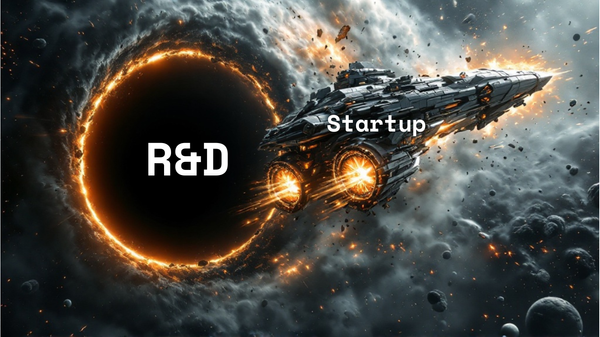An Overview of What to Expect from Talking to Investors

Investor Materials #1: To get in touch with investors is easy, providing them with the right material at the right time and keeping the conversation going is hard. To get in touch with VCs, you do not need large network. Your network will grow over time. What does not grow by itself over time, is to have the material ready you need. And to create and maintain this material requires planning, preparation and hard work.
I've experienced that conversations with investors stall more than once, and mostly the reason was that the right material investor requested was not ready at the right time. Thus, here are my learnings on how to set up your investor material, so that you are prepared to reach out and can sustainably maintain a professional appearance.
First of fall, reaching out to investors is just like sales. You go out, meet investors at events, get intros via other founders, you reach out to VCs on social media or via email.
In the early days of labfolder I made the mistake to start reaching out while I was not prepared enough. At that time, my co-founders and me just didn’t know exactly what we would need. I had no idea what slides our pitch deck should contain, how to best structure a financial plan (in a way that it makes sense to others as well!), and certainly I didn’t have a clue how a sales dashboard should look like.
Of course we had some kind of pitch deck and also some kind of a financial plan, but it required a lot of feedback, many learnings and iterations until you could call our material acceptable.
I am sure that we burned many investors through losing momentum in the early days of labfolder. And that was because weI could not deliver the right material at the right time, needed too much time to update data etc. And losing the momentum because of that is really the most annoying thing that can happen to you.
Also don’t underestimate the stress you inflict on yourself due to lack of preparation: In some cases, I was in conversations with several investors, who requested different kinds of material at the same time.
Request from VC 1: "Cool idea! Can you send me a detailed competitor analysis?", request from VC 2 "Interesting product and great market! I don’t fully get your sales model, can you send me your pipeline analysis?
If you can’t pull the competitor analysis and your sales pipeline out of the drawer right away, creating both materials from scratch on time is likely to fail, and the risk to lose the momentum with at least one of the two investors is pretty high.
Delivering the material after one week might be too late, and when you’re (hopefully) driven to build your real business and not only investor relations you’ll find yourself in a stretch. It certainly doesn’t feel great when you need to spend time on designing a nice sales funnel, while at the same time you want to just do sales!
That’s why I’m starting this series, so that you can assemble the best gear and can take off to wild, wild investor land and shoot back to investors asking you for some piece of information. "Sure, no problem. I’ll send it as soon as I'm back on my desk.”
One important thing before you start creating your pitch deck, your financial plan and all the other things I might tell you about. Think of maintainability. Just as often as I have experienced the lack of material, I have experienced over-engineered material, which made it really difficult to do updates and adjustments. It doesn’t help when your pitch deck is perfectly designed, if you cannot update it quickly. Your flirting with investors will probably go on for months, during which your sales pipeline is changing as well (hopefully!). I would think your pitch deck is over engineered, if you need a designer or get busy with Photoshop yourself in order to update your sales funnel when the underlying data is changing. Just the same with your financial plan: Your financial plan is always a forecast, and a forecast changes with every month that goes past. So do the milestones that you might achieve or need to change during ongoing conversations with investors - those milestones have to change in your pitch deck as well.
To the point: What do you need for the perfect investor approach?
Here comes the list. I’m trying to differentiate between the first stages of a startup (pre-seed, seed, Series A), in order to provide an indicator which material when is important at which stage. But please don’t take the list as a rule, of course a sales dashboard might be requested already for the seed round if you previously boasted that you have hundreds of customer lined up ;-)
| Pre-Seed | Seed | Series A | |
| Pitch Deck (ppt / gSlides) | 10-12 slides | 10-15 slides | 15-20 slides |
| Forecast / budget (xls / gSheet) | yes, simple | detailed | detailed |
| market analysis (xls / gSheet) | detailed | detailed | Yes, but not so important anymore |
| competitor analysis (xls / gSheet) | detailed | detailed | detailed |
| Sales Dashboard (xls / gSheet) | no | Rather not | yes |
| elevator pitch (text) | yes | yes | yes |
| email template middleman (text) | yes | yes | Yes, but not so important anymore |
| Cap Table | Probably not | yes | yes |
There are some materials that according to my experience, become less important in later phases of your startup. In general, your Series A investors are going to trust in your seed investors that they, for example, evaluated your market potential of your product or services thoroughly, so that they are likely not going to deep-dive in that. And I also remember that the question for a detailed market analysis was more important for our pre-seed and seed rounds, but wasn’t really a huge topic for our Series A investors.
Just the same goes with employing middlemen to reach out to investors. My assumption is that when you raise a Series A, you’ll probably have a well established network on your own, meaning that you probably don’t need a full fledged template mail for a middlemen anymore, but that a text sippet ready to be send out to someone offering an intro is just enough.
Finally, something very important:
I firmly believe that reaching out to investors is not the core business of an entrepreneur and I also believe the success of a startup should not be measured by how much funding it raised.
It’s the core business of an entrepreneur to have enough cash on the company’s bank account, but this cash should primarily come from your regular business, i. E. the sales of a great product and services, not just from investors.
For many startups, the road to the first substantial revenues is through building the company with the money of investors. However, taking money from investors should definitly not be the main reason for existence of that company, in my view.
I can honestly write about this, because in retrospect I have spent too much time with investors at some times. Let’s say there were certainly periods in which my time would have been much better invested into the core business than in chasing investors!
To sum it up: I do not write this series because I think that reaching out to investors and creating good investor material is the most important thing for you to do, but because I want to share my experience so you need to spend as little time as possible on this, and instead can focus on the most important thing: Your core business!
The next part of this series is about the pitch deck - how you present yourself to investors.
An overview of the entire series:
Disclaimer: The list below is more of an overview of what the series might contain sometime ... most of the texts are currently in raw format or do not exist yet at all! Therefore the list might change at any time! If there is a subject on which I should definitely write about or a subject you’re interested in that is not appearing in this list at all, just leave me a comment!
Part 1: Get ready - An overview of what to expect from talking to investors.
Part 2: The Pitch Deck - how you present yourself to investors
Part 3: "Thanks for the pitch deck. Can you send your financial plan?" - Work in progress ;-)
Part 4: Market Analysis - Work in progress ;-)
Part 5: Competitor Analysis - Work in progress ;-)
part 6: Your Sales Dashboard - Work in progress ;-)
part 7: On the way to deal: The Cap Table - Work in progress ;-)
part 8: Deal or no deal - in any case, that was just the beginning - Work in progress ;-)




